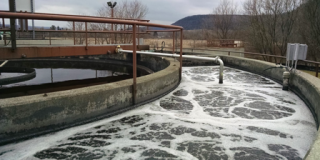Alternative Wastewater Disinfectant Research

Municipal wastewater treatment is aimed at protecting the environment through improved effluent treatment practices, eliminating toxic treatment byproducts, and reducing treatment costs. Treatment is usually carried out through ultraviolet (UV) exposure or application of disinfectants. However, using UV for treatment can be energy intensive, and the overuse of disinfectants, such as chlorine, can lead to harmful disinfection byproducts (DBPs).
EPA is investigating the use of alternative disinfectants in combination with UV or chlorination to improve disinfection efficiency, decrease costs and energy consumption, and minimize DBP formation. Peracetic acid (PAA) emerged as an alternative to chlorination in many utilities in the United States. PAA is gaining acceptance due to its potential to reduce known health and ecological impacts raised from continued usage of chlorination or other disinfection methods. However, the effectiveness of PAA is limited, particularly for certain microbial species that require high dose concentrations. EPA research examines:
- the combination of PAA with UV technologies or chlorination;
- bench scale and full-scale pilot studies which demonstrated that combining PAA with UV technologies or chlorination can help to overcome the issues where one fails independently; and
- the use of PAA to reduce energy demands, treatment cost, and harmful DBPs in wastewater treatment.
